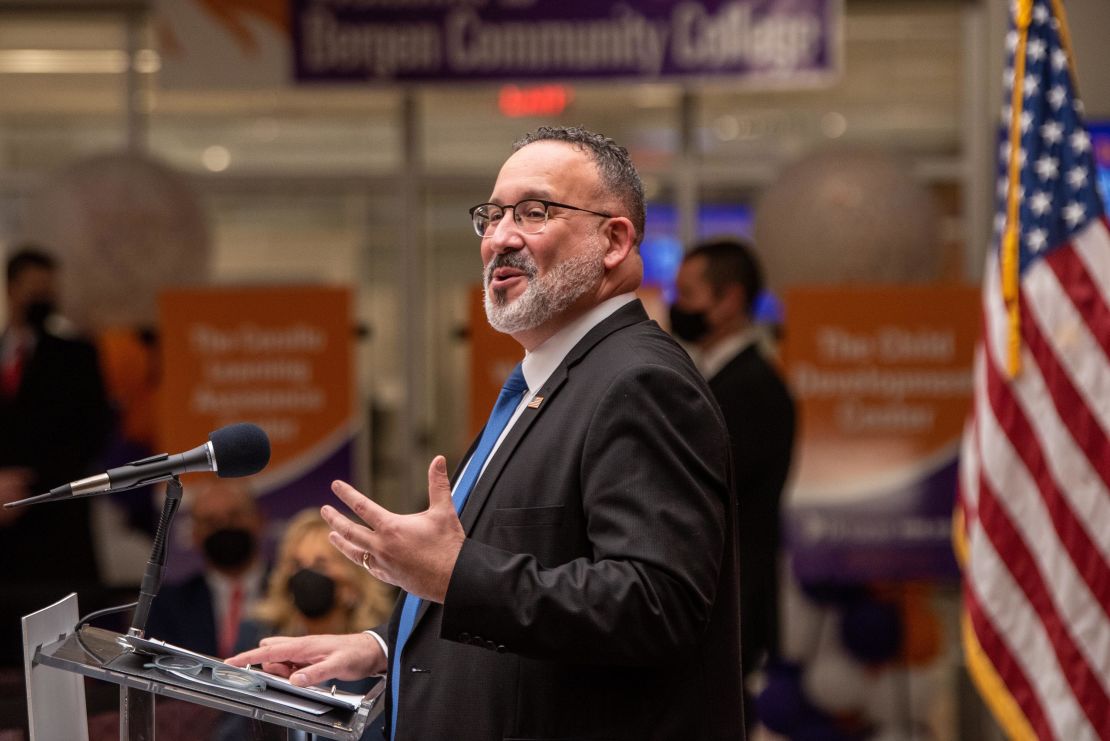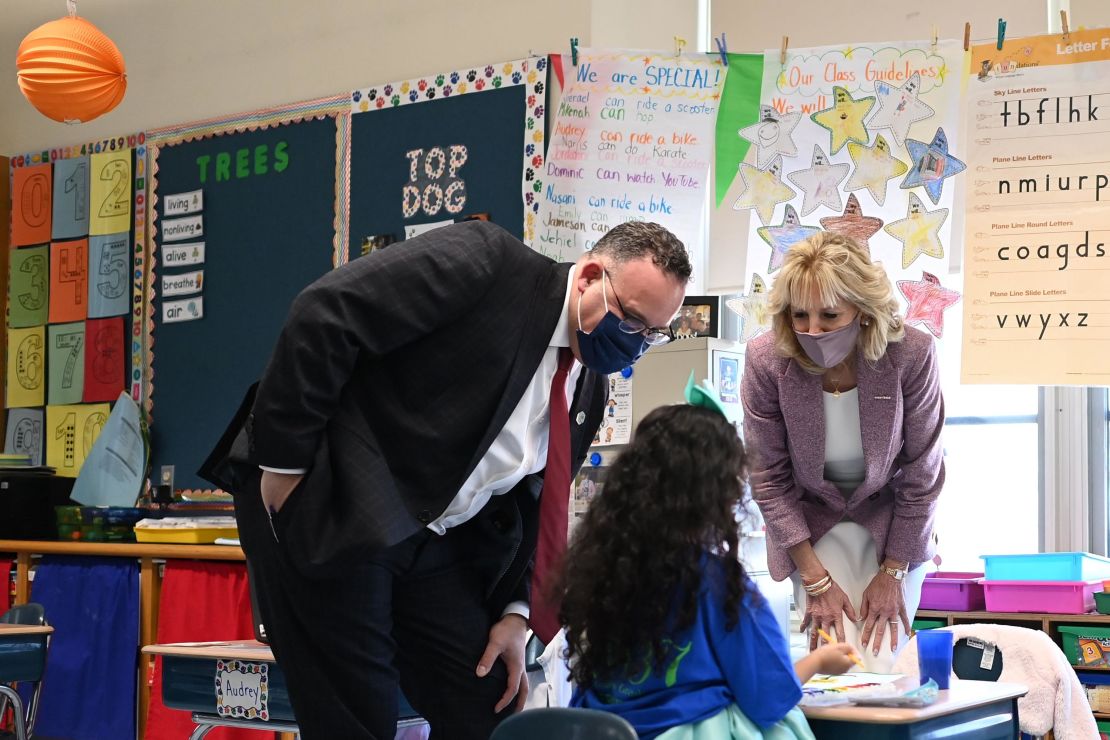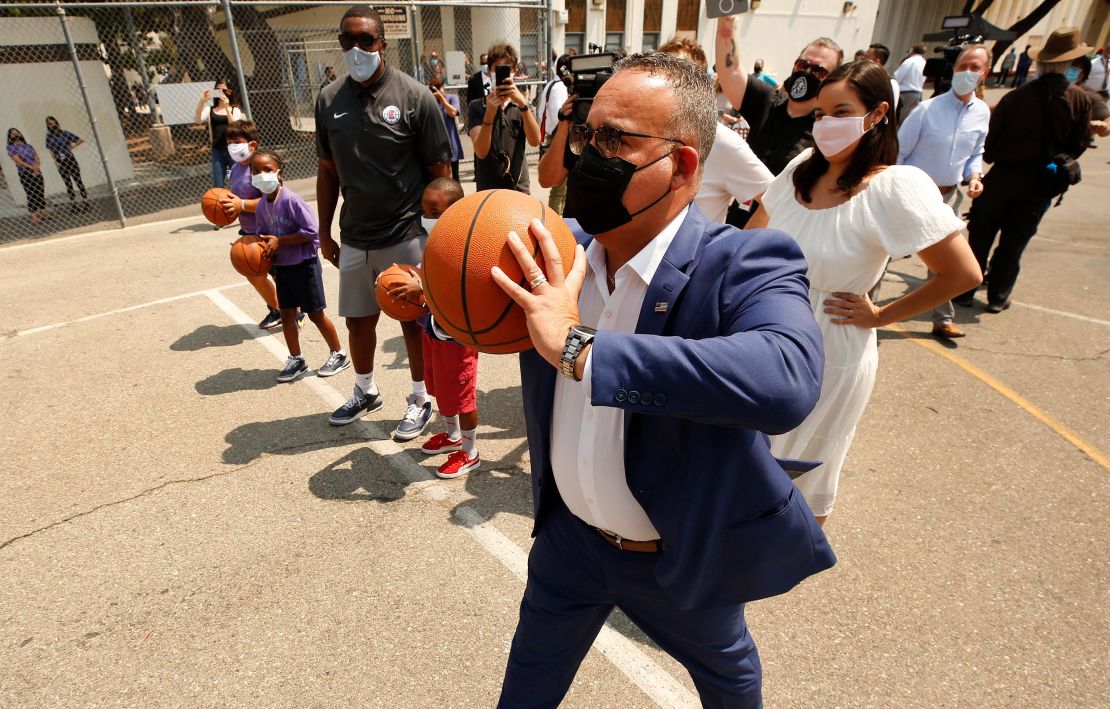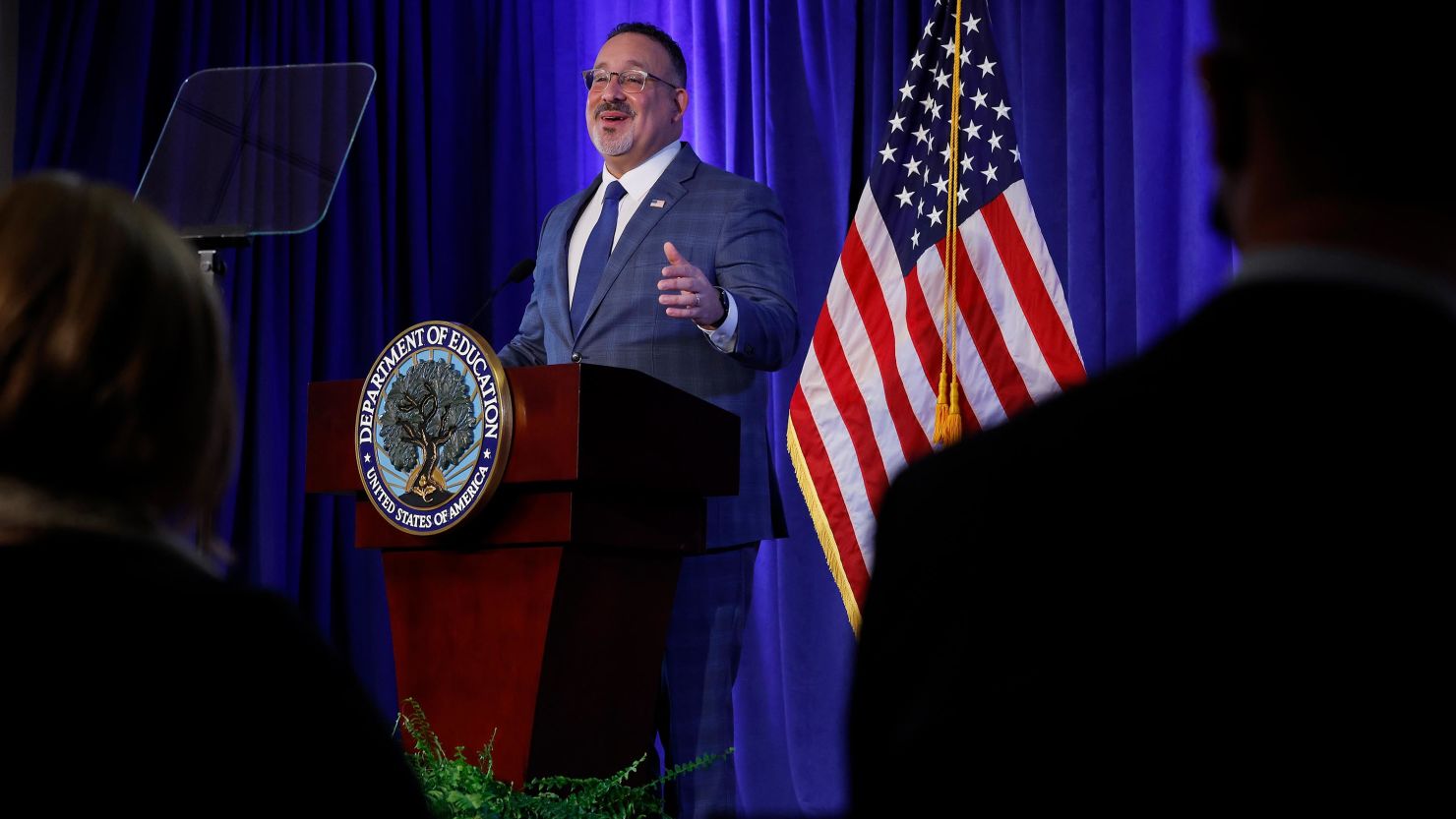“It turned out to be a horrible day,” Education Secretary Miguel Cardona said, recalling his first day of kindergarten as a 5-year-old still learning English.
His mom had to pick up her overwhelmed son early that day, but Cardona eventually found Connecticut’s public school system to be a place of ample opportunities.
About four decades after entering kindergarten, Cardona was sitting in a makeshift office in his basement as the state’s education commissioner facing another daunting challenge: reopening Connecticut’s schools for in-person learning during the Covid-19 pandemic.
“Like my first day of school, it also seemed impossible,” Cardona said in a recent speech.
Yet many credit Cardona’s consistent push for in-person learning in Connecticut with helping propel him to the national stage and receiving President Joe Biden’s nomination after less than two years in the commissioner role.
Most of America’s schools have now returned to daily in-person learning, but it was far from an easy year for students, their families, teachers and staff. Parents fought at school board meetings, caught in the crosshairs of left-right politics. Some districts face severe staff and teacher shortages.
Cardona, 46, has found himself as the nation’s top schools chief at a time of unprecedented tumult. He’s been tasked with guiding the country’s schools to stay open and helping them use billions of federal relief dollars effectively – while the power to make those decisions lies primarily with state and local leaders.

Omicron adds to families’ frustrations
Families are still struggling to juggle temporary school shutdowns and adhere to Covid-19 testing and isolation rules at their kids’ schools. This was especially the case after the winter break, when thousands of schools returned temporarily to remote learning or delayed reopening due to the surge in cases and teacher absences.
After an extremely challenging two years, some parents are losing trust in the public school system. About one-third gave their schools grades of C, D or F on how they’re addressing learning challenges related to the pandemic and providing mental health supports, according to a November survey. Several of the nation’s larger public school districts have seen a drop in enrollment.
“To those parents, I understand the fatigue. It’s been two years, and we thought it was going to be two weeks,” Cardona told CNN in a recent interview.
“We’re all tired. We’re tired of masks. But for me it’s been really clear that our schools not only have to reopen but need to reimagine and do better than they even were before the pandemic,” he said.
The Biden administration continued to encourage masking in schools this week after several Democratic states set timelines to lift school mask mandates.
In an effort to combat the Omicron surge, the administration announced during the second week in January that it would begin distributing an additional 10 million Covid-19 tests a month to schools and students.
But to many parents, the effort was too late.
“Why didn’t every kid in America have a test in their backpack when they went home for winter break?” asked Keri Rodrigues, president of the National Parents Union, a network of grassroots parent activists across the country.
The pandemic, she said, galvanized the group.
“We were witnessing the catastrophic failure of public education in our living rooms,” Rodrigues said.
National Parents Union representatives regularly engage with the Biden administration, but Rodrigues says she’s sometimes been disappointed with the lack of action.
“It’s been a mixed bag,” she says of Cardona’s first year.
“While addressing the morale of teachers is important, I think he has not given the same support to parents and families, and frankly students, who literally held up the American public education system the last two years,” Rodrigues said.

He’s walked in teachers’ shoes
As a former educator, Cardona can relate to teachers.
He began his career as a fourth-grade teacher in Meriden, Connecticut, where his family had moved from Puerto Rico and he had gone to school. Cardona soon became a principal and then assistant superintendent in the district. Now his two children go to high school there.
Parts of a recent speech he gave outlining his priorities for the year spoke directly to teachers, calling them “heroic.”
“Moving forward, it is on us to make sure education jobs are ones that educators don’t want to leave,” he added.
More than half of teachers recently surveyed by the National Education Association said they are burned out and ready to leave the profession earlier than planned.
RELATED: Teachers are leaving and few people want to join the field.
Cardona also extended an olive branch of sorts to parents, highlighting how important it is for their voices to be heard.
“Especially now during a pandemic, engaging all parents’ voices in this process of recovery and addressing disparities is not only important, it’s necessary,” he said.
Cardona is a stark contrast to his predecessor, Betsy DeVos. Even to activist parents like Rodrigues, Cardona is a clear “improvement” over DeVos, a billionaire and longtime supporter of private schools who clashed with teachers unions.
Once he was nominated, Cardona immediately had the support of the two biggest teachers unions in the country.
“What I appreciate about the secretary is that when something is important he reaches out, and I do the same,” Randi Weingarten, president of the American Federation of Teachers, said in a recent interview.
“People trust that he sees an issue from all angles,” she said.
“And in an imperative time like we’re in, with so much toxicity, the fact that he carries so much trust with him is really, really important,” she added.
A quick ascent to the top of public education
Cardona’s ascent was fast, as he built a reputation as a highly regarded, compassionate educator in Meriden, a small city with a significant Latino population and where many students come from low-income families.
In Meriden, he led a revamp of the teacher evaluation system – balancing the needs of students with the staff and navigating the teachers unions and state requirements.
“I’m not sure any role could prepare him for the one he’s in now,” said Mark Benigni, with a laugh. Benigni is the superintendent of Meriden schools who hired Cardona to work in his central office.
“But he’s always the same person no matter the role. He’s patient and works well with different constituencies and strong opposing viewpoints. He knows not everyone is going to love every idea, but he brings people together knowing we can find common ground,” Benigni added.
After about two decades working in the Meriden school district, Cardona was tapped by Democratic Gov. Ned Lamont to serve as Connecticut’s education commissioner in 2019. The onset of the Covid-19 pandemic required that he work with state leaders across education and health agencies. Early on, he strongly urged Connecticut schools to open every day for in-person learning, but he ultimately left the decision on whether to reopen full time in September 2020 up to local districts.
“Somehow, during that relatively short period of time, in early Covid, he put Connecticut on the map – and before you know it, he’s a potential candidate for secretary of education,” said Robert Villanova, an education professor at the University of Connecticut. He’s the director of the school’s executive leadership program, from which Cardona received a certificate in 2012.
“His aspirations are nothing but pure,” Villanova said, adding, “I would guess that during his time as commissioner, becoming secretary of education was his last thought.”

Using the bully pulpit
For Cardona, keeping schools open is not good enough going forward. Even harder work lies ahead.
He has a long list of priorities for the next year, like expanding mental health support at schools and giving every child who fell behind during the pandemic time with a tutor three days a week. He said he’d like to see every high schooler participate in at least one extracurricular activity.
“Kids can’t suffer anymore. They suffered enough,” he said, sitting in his office in Washington, where a student-made welcome poster hangs by the door.
But as secretary of education, he doesn’t have the authority to make most of that happen like he did when he was working at the local level. Decisions on staffing, curricula and how to keep schools open safely are left to the states or local districts.
Even the nearly $130 billion Congress authorized last year to help K-12 schools recover from the pandemic has few strings attached that the secretary can pull. States were required to submit spending plans to the US Department of Education before receiving all the money. As of last month, all those plans had been reviewed and 100% of the funds have been distributed to the states.
Now the department is working on providing districts with guidance on how to be transparent with parents about how the money is being used.
“We’re helping create the narrative around what the kids need based on what we’re seeing and hearing,” Cardona said, acknowledging that much of this is up to local decision-makers.
“By and large, that’s how it’s designed and I think it works that way – but it doesn’t mean that I won’t take the opportunity sitting here to say what I know works best for children based on what I’m hearing, what I’ve known,” he said.

